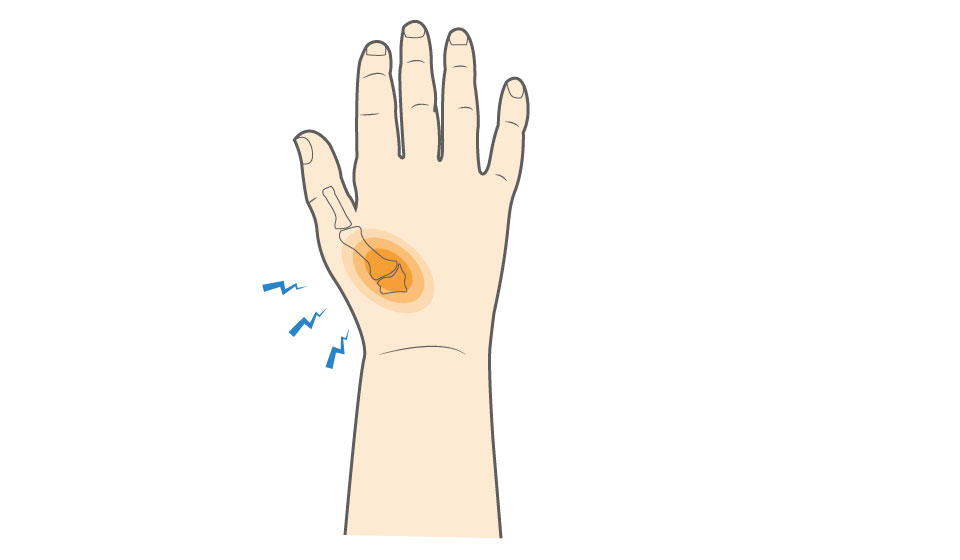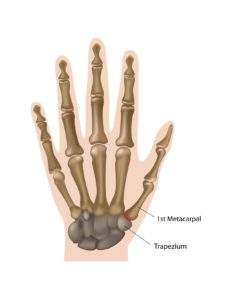The carpometacarpal (CMC) joint, also known as the basal joint, connects the base of your thumb to your wrist. The CMC joint allows your thumb to move in various directions and grasp objects.
Arthritis of the CMC joint is a degenerative condition that can lead to severe pain, thumb stiffness, and loss of motion in the thumb. This makes it difficult to complete daily tasks like turning doorknobs. CMC joint arthritis is common, especially among women and older adults.



